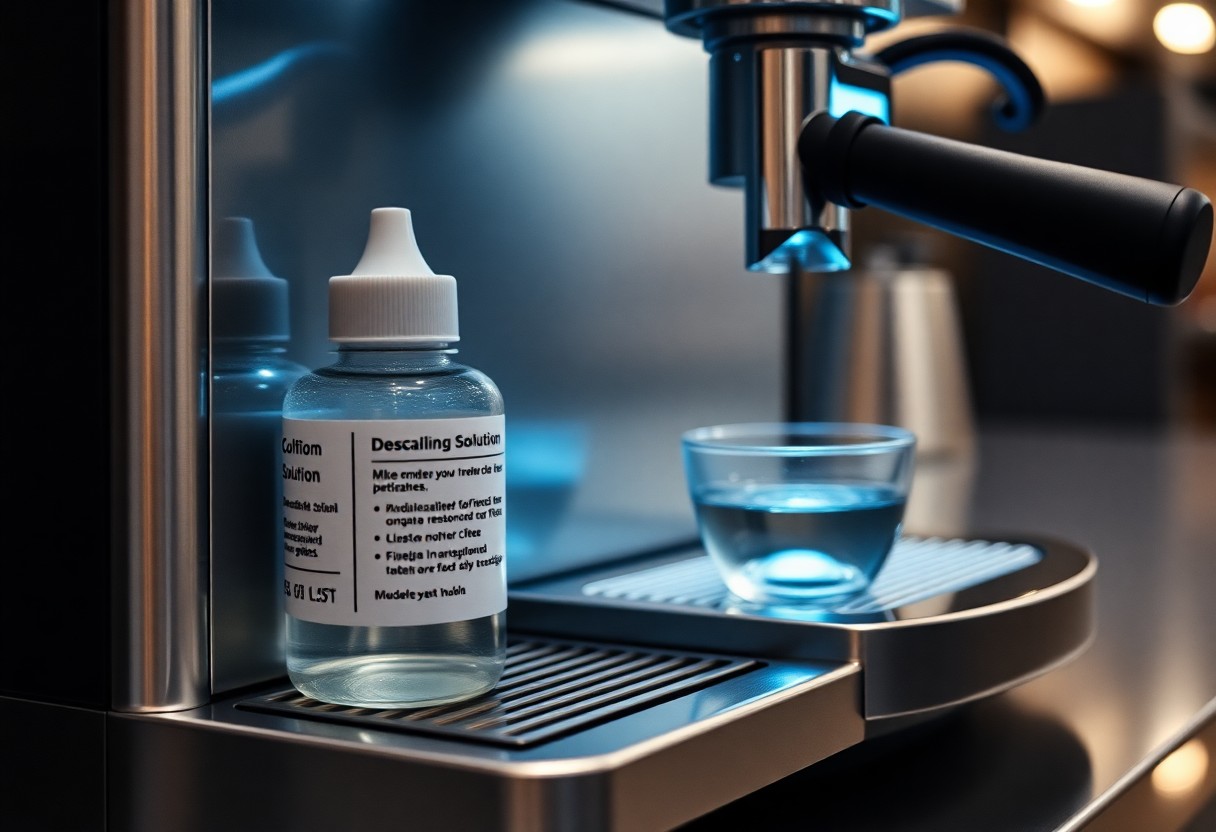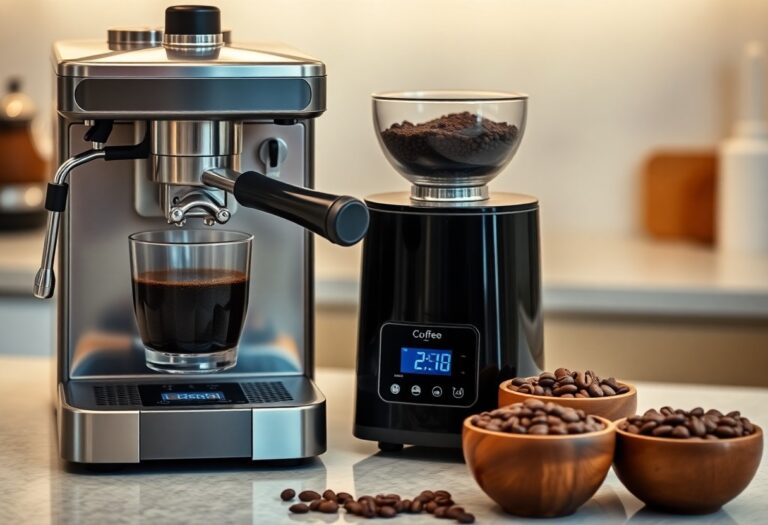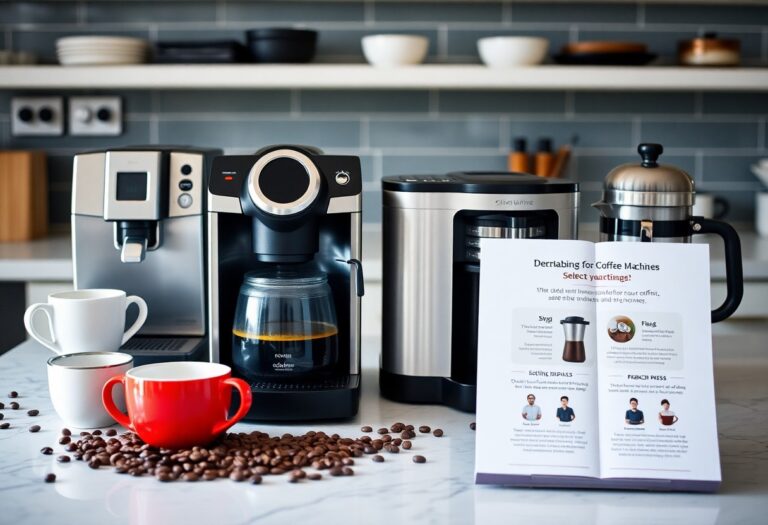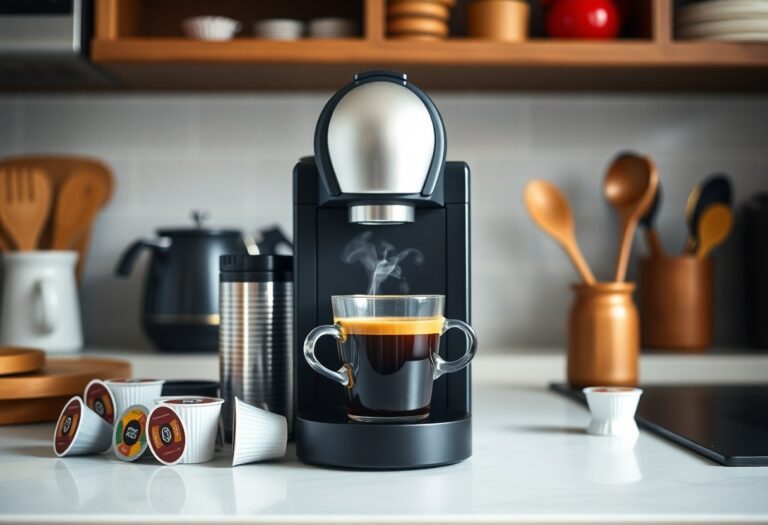What to Use to Decalcify a Coffee Machine – Descaling Solutions
With your coffee machine’s performance and lifespan on the line, understanding what to use for effective decalcification is imperative. The accumulation of minerals from water, especially calcium and lime, can diminish your coffee’s flavor and even damage the machine. You can utilize commercial descaling solutions specifically designed for this purpose, or turn to natural alternatives like vinegar or citric acid. This guide will help you choose the best descaling solution to keep your coffee machine operating smoothly and brewing great-tasting coffee.
Key Takeaways:
- Descaling solutions specifically designed for coffee machines are highly effective for removing mineral buildup.
- White vinegar can be used as a natural alternative, though it may not be as effective as commercial descalers.
- Follow the manufacturer’s guidelines for descaling frequency to maintain optimal performance and prolong the life of your coffee machine.
- Always rinse the machine thoroughly after descaling to eliminate any residual solution or vinegar taste in your beverages.
- Consider using filtered water in your coffee machine to reduce mineral deposits and lessen the need for frequent descaling.
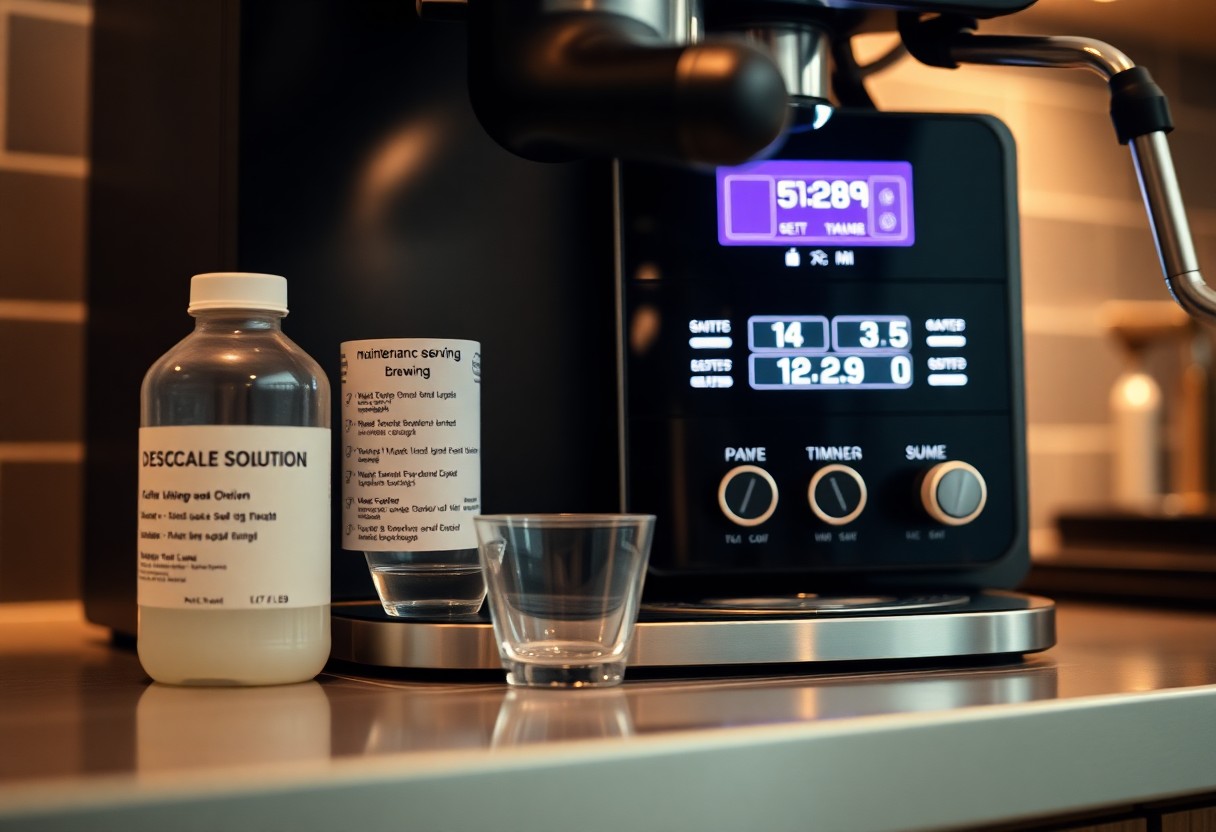
The Importance of Regular Descaling
Regular descaling of your coffee machine is vital to ensure consistent performance and enhanced coffee flavor. Over time, limescale buildup can obstruct water flow, preventing the machine from operating efficiently. This not only impacts brewing times but also alters the taste and aroma of your coffee, leading to a less enjoyable experience overall.
How Limescale Affects Coffee Quality
Limescale accumulation in your coffee machine can significantly compromise the quality of your brews. As mineral deposits interfere with the water’s ability to circulate, you may notice variable water temperatures and diminished flavor extraction. This ultimately results in weaker, less vibrant coffee—something no coffee lover wants.
The Lifespan of Your Coffee Machine
The longevity of your coffee machine is directly linked to how well you maintain it. Performing regular descaling can extend its life, preventing damage from mineral buildup that would otherwise lead to costly repairs or replacements. Investing time in this simple maintenance task saves you money in the long run while ensuring that you enjoy your favorite brews for years to come.
Natural Alternatives to Chemical Descalers
For those seeking eco-friendly options to keep your coffee machine in top shape, natural descaling agents are a great choice. These alternatives can be effective, cost-efficient, and safer for both your appliance and the environment. You can easily find these ingredients in your kitchen, making them accessible and convenient for regular maintenance. Let’s explore two popular natural options: vinegar and citric acid.
The Power of Vinegar: Benefits and Drawbacks
Vinegar serves as a well-known natural descaler thanks to its acetic acid content, which works to dissolve mineral deposits efficiently. While it’s readily available and inexpensive, using vinegar may impart an unpleasant odor, and it might not be as effective on heavy scale buildup as some chemical options. To use vinegar, simply mix equal parts with water and run it through your coffee machine, followed by several cycles of plain water to remove any lingering taste.
Citric Acid: A Kitchen Staple and Its Effectiveness
Citric acid, commonly available in powder form or as a natural ingredient in citrus fruits, is another effective descaler for your coffee machine. Its ability to chelate minerals makes it highly effective in breaking down limescale without harmful side effects. You can make a descaling solution with about 2 tablespoons of citric acid powder diluted in a liter of water, which can easily tackle build-ups and leave your machine running smoothly.
Citric acid’s versatility goes beyond descaling; it’s also a natural preservative and flavor enhancer. This property makes it a popular choice in many culinary applications, which is likely why it’s already present in your pantry. Using citric acid for descaling not only effectively removes mineral deposits but also ensures that your coffee machine isn’t exposed to harsh chemicals, promoting a longer lifespan for the machine and better-tasting coffee. With its pleasant citrus scent, it also eliminates some odor issues associated with other natural descalers like vinegar.
Commercial Descaling Solutions: A Comparative Analysis
Different commercial descaling solutions offer varying effectiveness levels and formulation types to meet diverse needs. Some are citric acid-based, while others utilize lactic or phosphoric acids. Here’s a comparative analysis of popular products on the market:
| Descaling Solution | Features |
|---|---|
| De’Longhi EcoDecalk | Natural ingredients, environmentally friendly, effective against calcium deposits. |
| Urnex Dezcal | Powder formulation, powerful performance for heavy scaling, safe for all coffee machines. |
| Saeco Decalcifier | Specially formulated for Saeco machines, convenient liquid form, effective treatment. |
| Bradley Smoker Liquid Smoke Cleaner | Versatile use for various machines, includes citric acid, promotes machine longevity. |
Top-rated Products on the Market
Some of the best-rated descaling products include De’Longhi EcoDecalk, renowned for its natural ingredients and environmental focus, and Urnex Dezcal, known for its aggressive action against heavy scale. These products have consistently received high marks from users, thanks to their effectiveness and ease of use. Choosing a top-rated product ensures you get the best quality for maintaining your coffee machine’s performance.
How to Choose the Right Solution for Your Machine
Selecting the appropriate descaling solution involves considering your coffee machine’s manufacturer recommendations, the type of water hardness in your area, and the nature of the mineral buildup. Many manufacturers produce dedicated solutions for optimal performance, while generic options can also be effective. Additionally, understanding whether your machine is sensitive to certain chemicals will help you choose a suitable product.
Consider methods such as checking your coffee machine’s user manual for specific guidelines on descaling products. If your machine is designed to work with proprietary solutions, it’s wise to stick with those to avoid potential damage. Also, assess the water quality in your region—if you live in a hard water area, opting for strong citric or lactic acid solutions could better address high mineral content. Finally, always prioritize safety by ensuring you choose non-corrosive solutions that won’t harm internal components.
Step-by-Step Descaling Process
Descaling your coffee machine is vital for maintaining its performance and ensuring great-tasting coffee. This step-by-step process will guide you through preparing your machine and executing the descaling procedure effectively. Below is a breakdown of vital steps you need to follow.
| Step | Action |
| 1 | Gather your descaling solution or natural alternative. |
| 2 | Fill the water reservoir with the descaling solution. |
| 3 | Run the descaling cycle according to your machine’s instructions. |
| 4 | Rinse the reservoir and run clean water through the system. |
| 5 | Reassemble your machine and enjoy your coffee. |
Preparing Your Machine for Descaling
Begin the process by ensuring your coffee machine is turned off and unplugged. Empty the water reservoir, and remove any coffee grounds or filters. This preparation step is imperative, as it prevents any residues from interfering with the descaling solution. Filling the reservoir with clean water will be your next step after descaling.
Detailed Instructions for Various Coffee Machine Types
Different coffee machines require specific descaling procedures. For your espresso machine, follow the manufacturer’s guide closely, as they often have unique cycles. Drip coffee makers typically just need the solution brewed through it. Single-serve machines often feature a special cleaning cycle, while bean-to-cup machines may need you to disassemble certain parts. Ensure to correlate the descaling instructions based on your device to avoid issues.
| Coffee Machine Type | Descaling Instructions |
| Espresso Machines | Use specific espresso descalers, and follow your manual. |
| Drip Coffee Makers | Run a cycle with the descaling solution, followed by clean water. |
| Single-Serve Machines | Activate the cleaning mode while using the descaling solution. |
| Bean-to-Cup Machines | Disassemble as needed and follow the manufacturer’s recommendations. |
| French Press | Use vinegar and hot water, then rinse thoroughly. |
- Espresso machines need specialized cleaning products.
- Drip coffee makers generally require a straightforward solution run through the cycle.
- With single-serve machines, using the cleaning cycle is imperative.
- Bean-to-cup machines often require disassembly for effective cleaning.
- French presses are best cleaned with vinegar and hot water.
The specific details in the instructions will help you avoid common pitfalls during the descaling process. Give attention to the cleaning cycles offered by your machine, and check the manufacturer’s guidelines for the best descaling solutions. Following these tailored instructions ensures that your coffee tastes great and your machine operates efficiently, making for a better coffee-making experience.
- Espresso machines benefit from unique descalers made for them.
- Drip coffee makers follow a simple fill-and-brew method.
- Single-serve machines usually include a dedicated cleaning mode.
- Bean-to-cup machines necessitate disassembly for deep cleaning.
- French presses can be easily descaled using vinegar.
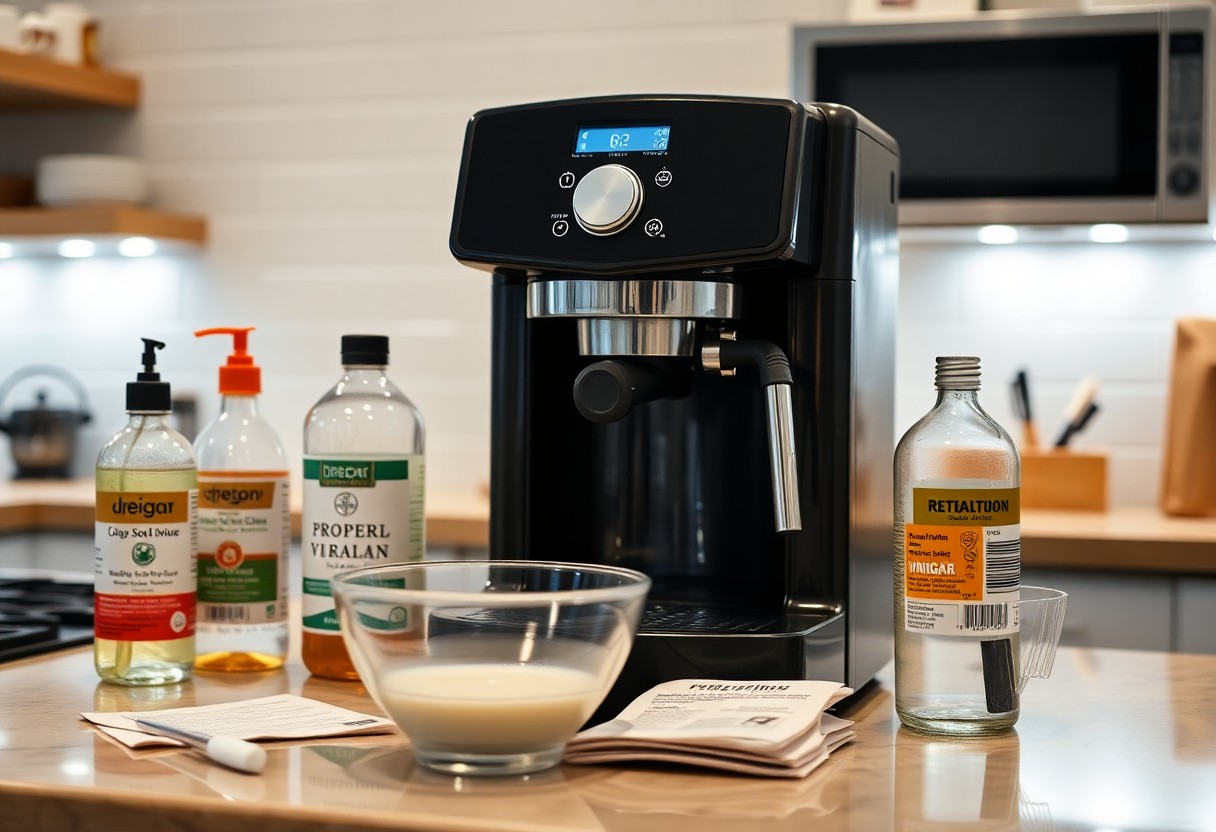
Maintenance Tips Beyond Descaling
Maintaining your coffee machine goes beyond regular descaling; consistent care contributes to optimal performance. Here are some crucial maintenance tips to keep in mind:
- Regularly clean the coffee pot and filter basket.
- Change water filters as recommended by the manufacturer.
- Inspect for any leaks or wear in hoses and seals.
- Keep the exterior clean to ensure proper heat regulation.
Recognizing the importance of these steps will prolong the life of your machine and enhance your coffee experience.
Preventative Measures to Reduce Limescale Build-up
To minimize limescale build-up, consider using filtered water instead of tap water, as it typically contains fewer minerals. Additionally, frequently running a mixture of water and vinegar through your machine can help combat deposits, even if you haven’t reached the point of needing a full descaling yet.
Best Practices for Coffee Machine Care
Simple habits can significantly impact your coffee machine’s longevity. Always empty the coffee grounds and rinse the carafe immediately after use to prevent residue build-up. Regularly check and clean the water reservoir to ensure that it is free from impurities.
Keeping your coffee machine in peak condition also involves using the right materials and methods for care. Avoid abrasive cleaners that can scratch surfaces. Instead, use soft cloths and mild detergents for exterior cleaning. After each use, ensure that all removable parts are washed and dried thoroughly. Setting a schedule for deep maintenance and understanding your specific machine’s needs will foster a more enjoyable and consistent brewing experience while significantly reducing repair costs.
Summing up
To wrap up, descaling your coffee machine is imperative for maintaining its performance and longevity. You can use various descaling solutions, including vinegar, citric acid, or commercial descalers specifically designed for coffee machines. Each option has its advantages, so choose one that best fits your preferences and needs. For more insights on alternatives, check out this resource on Can I descale/decalcify my coffee machine without a special …. Regular maintenance will ensure that you enjoy great coffee consistently.
FAQ
Q: What is decalcifying, and why is it important for my coffee machine?
A: Decalcifying refers to the process of removing mineral build-up, particularly calcium and magnesium, from the internal components of your coffee machine. Over time, hard water can leave deposits that may affect the taste of your coffee, the efficiency of your machine, and its overall lifespan. Regular descaling helps maintain optimal performance and ensures your coffee tastes great.
Q: What are the best descaling solutions for a coffee machine?
A: The best descaling solutions include commercial descalers specifically designed for coffee machines, which often contain citric acid or lactic acid. Alternatively, you can use natural descaling agents like white vinegar or lemon juice mixed with water. It’s important to consult the manufacturer’s recommendations for your specific coffee machine to choose an appropriate solution.
Q: How often should I descale my coffee machine?
A: The frequency of descaling depends on the hardness of your water and how often you use your coffee machine. As a general guideline, it is advisable to descale every 1-3 months. If you notice reduced performance, slower brewing times, or poor coffee flavor, it may be time to descale, regardless of the time elapsed.
Q: How do I descale my coffee machine using a commercial descaling solution?
A: To descale using a commercial solution, first, read the instructions provided with the product. Typically, you’ll need to dilute the descaling solution with water according to the manufacturer’s instructions. Then, pour the mixture into the water reservoir and run a brewing cycle without coffee grounds. After the cycle, rinse the machine thoroughly with fresh water to remove any residual solution.
Q: Can I use vinegar as a descaling solution, and how should I do it?
A: Yes, vinegar can be used as a descaling solution. To do this, mix equal parts of white vinegar and water in the coffee machine’s water reservoir. Run a brewing cycle without coffee grounds, followed by a couple of cycles with fresh water to neutralize the vinegar smell and taste. While vinegar is effective, you should consult your machine’s manual to ensure it won’t void any warranties or damage the machine.

